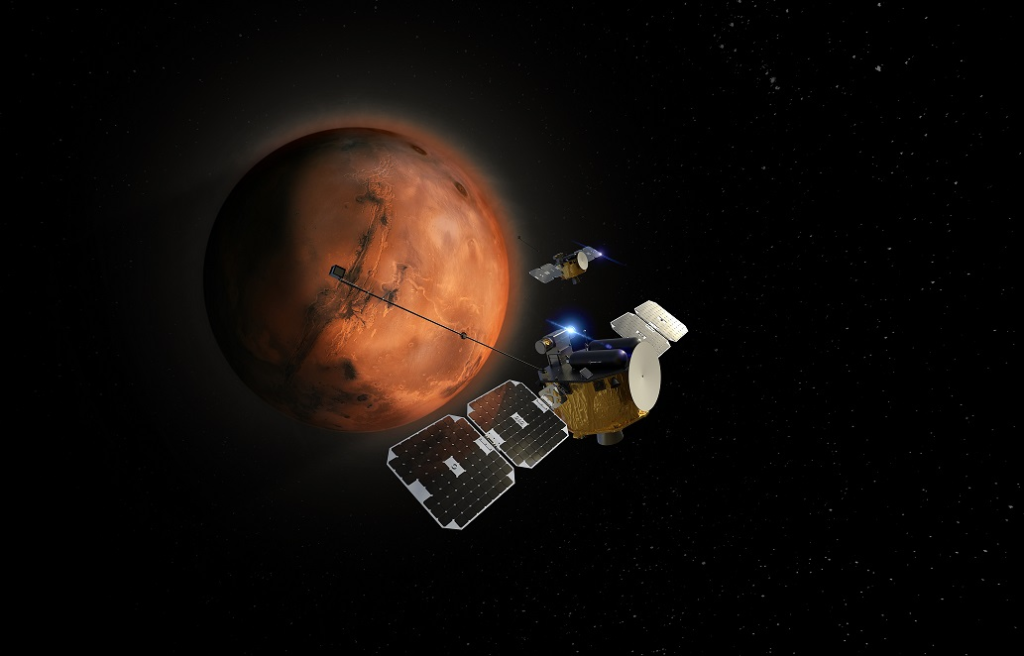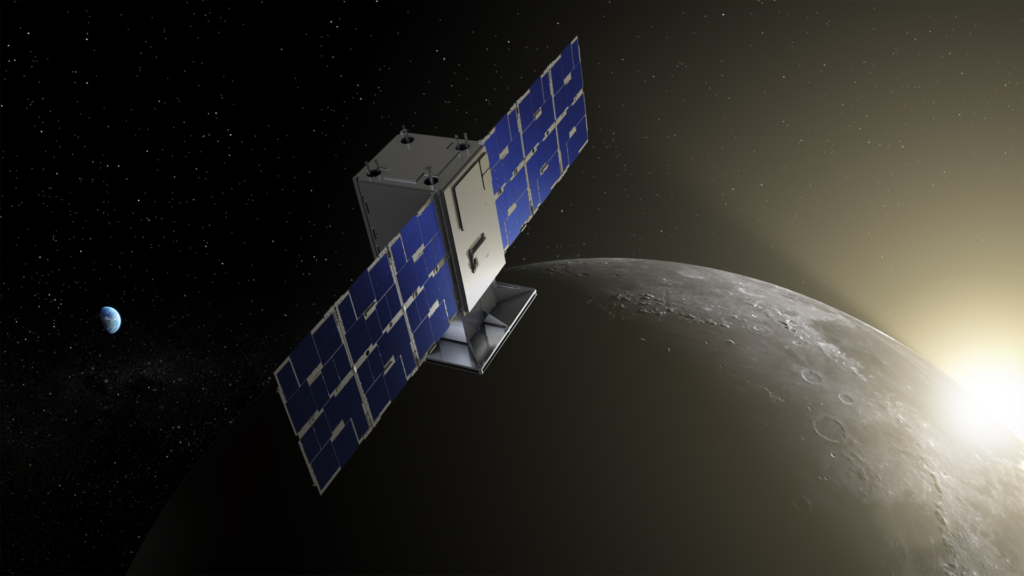
Rocket Lab’s Even More Ambitious Upcoming Mission To Mars
Many of us just watched Rocket Lab make history with the successful launch and deployment of the CAPSTONE satellite. This mission was important for many reasons including showing off the company’s capabilities with a small-lift launch vehicle and the help of Photon. However, this mission is just the beginning of Rocket Lab’s even more ambitious plans for the near future.
Not long ago the company announced a future mission to Mars. The red planet is over 100 million miles away yet Rocket Lab still plans to reach it with two specially designed Photon spacecraft. The Escape and Plasma Acceleration and Dynamics Explorers (ESCAPADE) mission will orbit two Rocket Lab-built Photon spacecraft around Mars to understand the structure, composition, variability, and dynamics of Mars’ unique hybrid magnetosphere.
As Rocket Lab continues to grow they also keep working toward bigger and better projects. All of which in the attempt to become much more than just a launch provider within the space industry. Here I will go more in-depth into the exact Mars mission, how CAPSTONE’s recent success plays into it, and what to expect in the future regarding this launch.
Mission To Mars

The first announcement of this mission came late last year when Rocket Lab had been awarded a subcontract by the University of California Berkeley Space Sciences Laboratory (UCBSSL) to design two Photon spacecraft for a scientific mission to Mars. Specifically, following an 11-month interplanetary cruise, the two Photons (named Blue and Gold) will insert themselves into elliptical orbits around Mars and conduct a 1-year primary science mission. ESCAPADE’s Photons will use the flight-proven Curie propulsion system to perform Mars orbit insertion and will be equipped with other subsystems that enable planetary science, including star trackers and reaction wheels for precision pointing from Rocket Lab’s Sinclair Interplanetary team, as well as ranging transceivers for deep space navigation.
The Escape and Plasma Acceleration and Dynamics Explorers (ESCAPADE) mission, led by Rob Lillis at UCBSSL, is a twin-spacecraft science mission that will orbit two spacecraft around Mars to understand the structure, composition, variability, and dynamics of Mars’ unique hybrid magnetosphere. The mission will leverage its unique dual viewpoint on the Mars environment to explore how the solar wind strips atmosphere away from Mars to better understand how its climate has changed over time. ESCAPADE is being developed under NASA’s Small Innovative Missions for Planetary Exploration (SIMPLEx) program in the Science Mission Directorate (SMD). The mission is led by UCBSSL with spacecraft design provided by Rocket Lab. The two spacecraft are planned for launch in 2024 to Mars ridesharing aboard a NASA-provided commercial launch vehicle.
During the announcement, Rocket Lab founder and CEO, Peter Beck said: “This is a hugely promising mission that will deliver big science in a small package. Planetary science missions have traditionally cost hundreds of millions of dollars and taken up to a decade to come to fruition. Our Photon spacecraft for ESCAPADE will demonstrate a more cost-effective approach to planetary exploration that will increase the science community’s access to our solar system for the better.” ESCAPADE is one of three missions selected in 2019 by NASA’s SIMPLEx program to conduct compelling planetary science and provide more opportunities for flight experience to the science community.
Only a few months after this initial announcement Rocket Lab once again released more information. This time they pointed out they will begin final mission design and commence manufacturing two interplanetary Photon spacecraft for a science mission to Mars, delivering Decadal-class science at a fraction of the cost of typical planetary missions. The purpose is to understand the structure, composition, variability, and dynamics of Mars’ unique hybrid magnetosphere. The mission will also support crewed exploration programs like Artemis through improved solar storm prediction. The ESCAPADE mission, led by principal investigator Robert Lillis at the University of California, Berkeley, is the latest SIMPLEX mission to pass Key Decision Point-C (KDP-C), confirming it for implementation in preparation for launch to Mars in 2024. The ESCAPADE mission is managed by the NASA Science Mission Directorate’s Heliophysics Division and will be the first Heliophysics mission to visit another planet. More recently Peter Beck highlighted, “ESCAPADE is an innovative mission that demonstrates that advanced interplanetary science is now within reach for a fraction of traditional costs, and we’re proud to make it possible with Photon,” he said. “Passing the Key Decision Point is a critical milestone in ESCAPADE’s development and is testament to the world-class science and engineering work of the UC Berkeley and Rocket Lab teams. We are delighted to receive the green light from NASA to proceed to flight.”
CAPSTONE & Photon

Now that we know more about this specific mission to Mars, we can take a closer look at the previous CAPSTONE mission, and what some of the similarities and differences are. Looking back at the CAPSTONE launch, once in orbit, Photon worked to increase its orbit using multiple burns over the course of a few days. This sixth burn was originally scheduled to be two burns, but Rocket Lab’s space systems team determined the HyperCurie engine would be capable of performing a single maneuver to accomplish the same delta-v, so combined the two. This is important because HyperCurie is vital in this upcoming mission to Mars. Rocket Lab learned a lot more about the engine and its capabilities which will be applied to the journey to Mars.
Looking at the design of Photon for both missions you can see some similarities and differences. As a configurable platform, Photon can be tailored to meet unique mission requirements. From mass manufacture as a streamlined constellation offering, to a single customized technology demonstration spacecraft. For CAPSTONE, Photon was fairly limited and featured the HyperCurie engine, smaller solar panels on top, and finally the payload itself. Looking at the mission to Mars, however, there are quite a lot of differences. The most obvious is the two large solar panels extending from the top of the spacecraft. Thanks to the acquisition of SolAero not long ago, we can expect these panels and additional technology to be made by Rocket Lab themselves. The other main differences include a large antenna, more communication technology, and a smaller upper profile.
These are just some of the reasons that make Photon such an impressive system. Rocket Lab describes it as reliable, flexible, and affordable satellite and spacecraft solutions that enable their customers to do more, spend less, and reach orbit faster. They enable missions in low Earth orbit, through to planetary science and exploration missions to the Moon, Mars, Venus, and beyond. Photon is an integrated launch and satellite solution. Rocket Lab’s Photon small spacecraft is based on the heritage Electron launch vehicle Kick Stage, leveraging numerous components that have significant flight heritage, including the Curie engine, an in-house designed and developed in-space propulsion system. Only a few months ago prior to the CAPSTONE mission, Rocket Lab tweeted saying, “The HyperCurie engine in action preparing for the CAPSTONE mission to lunar orbit for @AdvancedSpace and @NASA! This small but mighty engine will perform a series of orbit raising maneuvers before the final trans-lunar injection burn to set CAPSTONE on a course for lunar orbit.” This included a close up view of the engine firing during a test.
Another big difference from this mission and CAPSTONE or even a regular Photon launch is the rocket itself. Photon usually flies as the upper stage of Electron, eliminating the parasitic mass of deployed spacecraft and enabling full utilization of the fairing. However, in this case, the two spacecraft are planned for launch in 2024 to Mars ridesharing aboard a NASA-provided commercial launch vehicle. Some additional features include being vertically integrated with in-house subsystems based on constellation-scale manufacturing capabilities. It also has precision attitude determination and control sensors and actuators from Sinclair Interplanetary by Rocket Lab. It’s clear as time goes on and you dive deeper into some of the different projects that Rocket Lab is working on, the company is using more and more components from their acquisitions. All part of Peter Beck’s goal for Rocket Lab to become much more than just a launch provider. This mission to Mars is just another example of the company working on more ambitious projects.
Conclusion
A lot of us likely watched some of the recent CAPSTONE mission. This was a very big deal for Rocket Lab for a large list of reasons including the use of a small-lift launch vehicle and Photon. Together, they were able to fly the payload into orbit and proceed to raise the orbit before a transfer to the Moon. Now the company is working on another mission this time to Mars. We will have to wait and see how it progresses and the impact it has on the space industry.
